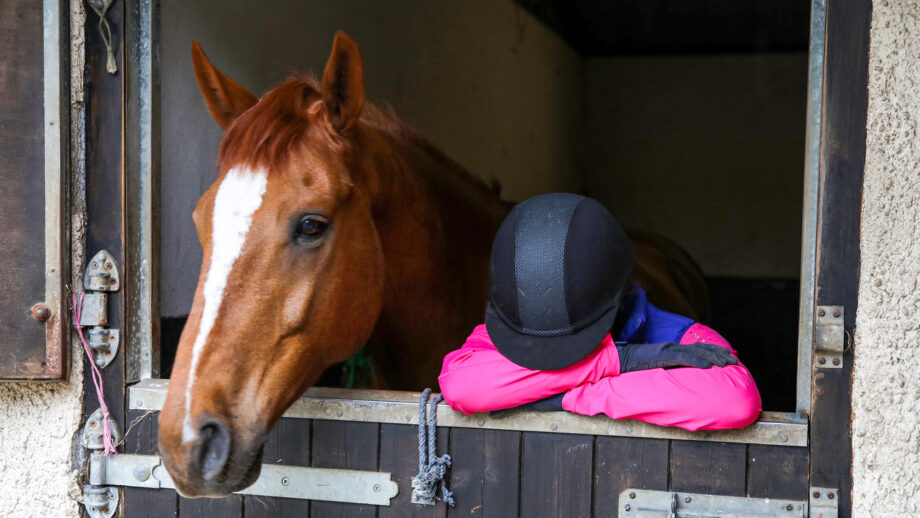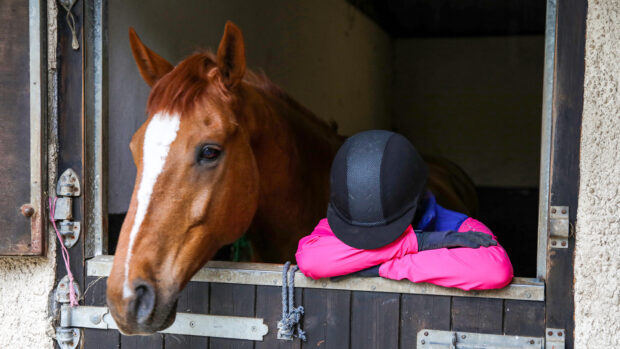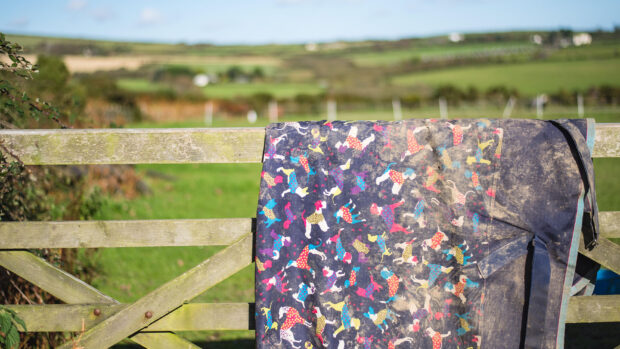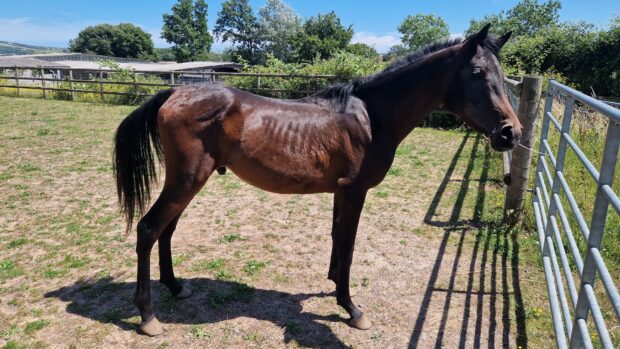Having a training buddy to act as your “eyes on the ground”, watch your schooling and relay what they are seeing is not a new idea, but in today’s tight financial times it is a great way of saving money on the amount you invest in your training.
So what does it take to be a good pair of eyes on the ground? And how can you make the best use of your training buddy? We asked top trainers for their tips.
Tip 1: choose the right buddy
“Finding a good training buddy is like finding a wife or a husband,” says eventer Andrew Parry. Andrew and fellow amateur eventer Jo Bunnell Thompson, both from Kent, are each others eyes on the ground — Jo describes him as “her secret weapon”. “You need to get along in life and, for the relationship to work, each side has to bring something to the party,” says Andrew.
Trainers agree that finding a buddy whose eye — and word — you trust is vital.
Dressage supremo Jennie Loriston-Clarke warns that no eyes on the ground are preferable to the wrong eyes.
“They need to know you and your horse well and appreciate that just because something works for them, doesn’t necessarily mean it will work for you. Every horse is different,” she says.
Accredited showjumping coach Paul Crago adds: “They don’t have to be the best rider in the world, but they do need to have a good understanding of what to look for from the ground and be able to convey this.”
Tip 2: observe, don’t coach
There is a big difference between the two.
“While a coach will tell a rider how to do something, your eyes on the ground should comment on what they see in front of them,” advises former Olympic eventer Eric Smiley, who cites a memorable personal exchange with a top judge as a case in point.
“This person was neither a rider nor a trainer, but she had an incredible eye for detail. She was watching me work a horse on the flat and said: ‘Do you have any more trot? Can you ask for any more bend? If you have a bit more of both it will look better.’
“She wasn’t telling me what I should be doing; she was advising me on the picture she was seeing and leaving it up to me to make changes.”
Tip 3: keep language simple
“In the horseworld, we are guilty of using ambiguous words that are hard to interpret,” says Eric. “‘Rhythm’ is a good example — it can cover a multitude of sins.”
Eric advocates keeping language simple.
“A rider needs to identify with what you are saying immediately. Instead of commenting on the rhythm, talk about regularity. Look at whether the strides are even, does the movement or jump look easy, or is it rushed or lacking energy?” he says.
Tip 4: be each other’s ‘mirrors’
There are certain movements where having a mirror is a distinct advantage. The next best thing, however, is a pair of eyes on the ground to comment on what you can’t feel.
“Walk pirouettes, the rein-back and flying changes are examples of where it’s good to see exactly what’s going on,” says Jennie Loriston-Clarke. “Your eyes on the ground need to watch the hindlegs, as a rider cannot always feel when the horse gets ‘stuck’ in the pirouette, fails to move backwards in diagonals or changes a fraction late behind.”
Jennie advocates practising these sorts of movements when you can ride with your schooling buddy or when they are on the ground helping you.
“Then you can be each other’s ‘mirrors’,” she says.
Tip 5: don’t criticise, ask a question
Asking a question rather than making a direct remark is a good way to convey your thoughts without upsetting one another.
“Say things like: ‘Did you mean to speed up three strides in front of the fence?’ or ‘Did you know you jumped to the right over that fence?’” advises Eric Smiley. “Asking a question gets the rider thinking for themselves — something that modern training is increasingly focusing on.”
Tip 6: focus on position
As your training buddy’s eyes on the ground, you can keep tabs on each other’s positions and balance in the saddle, says accredited British Eventing and British Showjumping coach Ernest Dillon.
“All riders have a weaker side and collapse a hip or inadvertently slide to one side of the saddle,” he says. “Having someone on the ground to remind you to sit centrally and evenly on both seat bones is a great help.
“Another fault that is easy to see from the ground is the rider niggling with their hands. The bit will be constantly moving in the horse’s mouth, but often the person on top doesn’t realise this.”
Tip 7: exploit each other’s strengths
Every rider has different strengths and weaknesses. This can be used to both riders’ mutual advantage.
Grand prix dressage riders Matt Frost and Adam Kemp work closely together every day.
“My strength is riding flying changes, whereas Adam’s is piaffe and passage,” says Matt. “If we’re struggling with one of these, sometimes it’s good to have someone else get on the horse and push the right buttons.”
Tip 8: watch each other’s lessons
Matt Frost says that training buddies often come to him for lessons together.
“They’ll watch each other’s sessions, which is brilliant because I can explain what I’m doing and what the homework needs to be to the observer as well as the rider,” he says. “The observer will often take notes in lessons. Then if there’s a training glitch between visits, both parties are more likely to have the tools to deal with it. Two brains on the job are better than one.”
Tip 9: Be positive
Training is all about building confidence.
“Of course you can point out mistakes, but you should also focus on the positives,” says showjumping trainer Paul Crago. “If your buddy makes a mistake at a fence, point this out, but also add that their horse had jumped the previous line really well.”
Ernest Dillon adds that a rider should always be questioning their own performance and self-reflect in a positive way.
“You need a training buddy who helps this process rather than hinders it,” he says.
Tip 10: be creative
The more inventive you can be with your training, the more each rider is likely to get out of it. Eric Smiley explains that one of his favourite exercises is to mark out a course of “jumps” by drawing lines on the ground in the arena.
“Something like this works particularly well in pairs because it is all about keeping the correct line,” he says. “One person rides the ‘course’ while the other person observes.
“If your buddy overshoots their line or loses their horse’s shoulder around the turn, then tell them. Feeding back your observations to one another will make you more aware of the lines you ride.”
Tip 11: use video
Being able to watch yourself doing an exercise either immediately after riding it, or later when you are reflecting on your performance, can be very beneficial. For some riders “seeing is believing” – a training buddy or coach can repeatedly flag that you are doing something that you need to change, but seeing it with your own eyes can often be the motivation needed to really commit to making the change happen.
And with the rise of remote cameraman equipment, such as the Pivo, which allows you to video your training without needing a second person on the ground, this can be a massive assets to your training regime. You can also then share your video with your trainer for their feedback as well.
You may also be interested in…

Remote training: A more versatile approach to coaching riders *H&H Plus*
One positive thing that may come out of this crisis is a more versatile approach to coaching. Andrea Oakes discovers

13 ways to save money on horse costs without compromising on care

Subscribe to Horse & Hound magazine today – and enjoy unlimited website access all year round
Horse & Hound magazine, out every Thursday, is packed with all the latest news and reports, as well as interviews, specials, nostalgia, vet and training advice. Find how you can enjoy the magazine delivered to your door every week, plus options to upgrade your subscription to access our online service that brings you breaking news and reports as well as other benefits.




